To earmark, July 2019 PhD Research Exhibition
Project Space |School of Fine Art, Art History and Cultural Studies, Leeds University
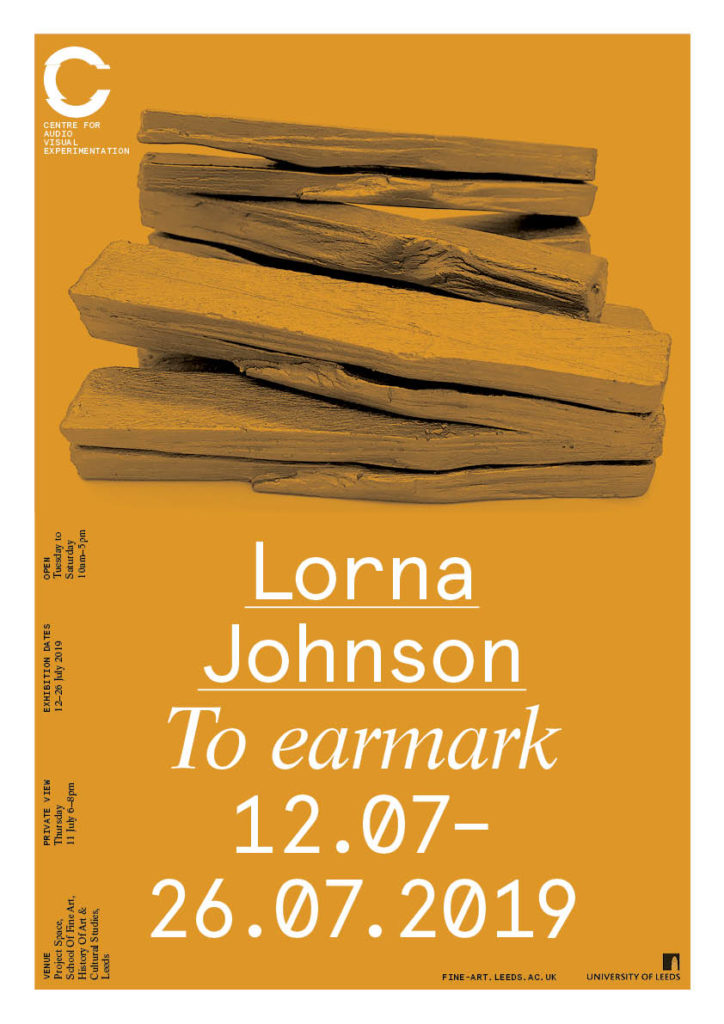
This transfer exhibition looked to bring together my practice-led PhD thinking and making process so far. This has been physically documented through my Small Makes piece – a production of work which is ongoing. These are small object pieces, made in response to my hoard research. They are visual markers and can be seen as preliminary drawings. Some feel finished in their own right; physically and the thinking behind these creations and other less so. Some will and have led to a bigger piece, a selection of which are included in this exhibition; Golder than gold, Nicks – a physicality, A hoard you say (dual) and others not, at least not yet. They are hanging loose threads waiting for their next connection, their next object to lead them into another visual marker or more substantial piece.
The works Overlie (film and drawings) and Golder than Gold are pieces of work I have made in response to the West Yorkshire Hoard. These pieces were the focal points of my recent exhibition – Deconstructing The West Yorkshire Hoard. The exhibition looked to examine my own responses to the West Yorkshire Hoard, conceptualising my approach as ‘the artist’s edit’ this exhibition attempted to unpick aspects of value, reuse and flux; exploring the questions raised when the material nature of these objects is queried. The aim is to offer new ways to think about the interpretation and display of hoards, in the broader context of contemporary art responses to heritage.

Small makes (2017-2019)
Objects – found and made – small individual pieces
As per above.
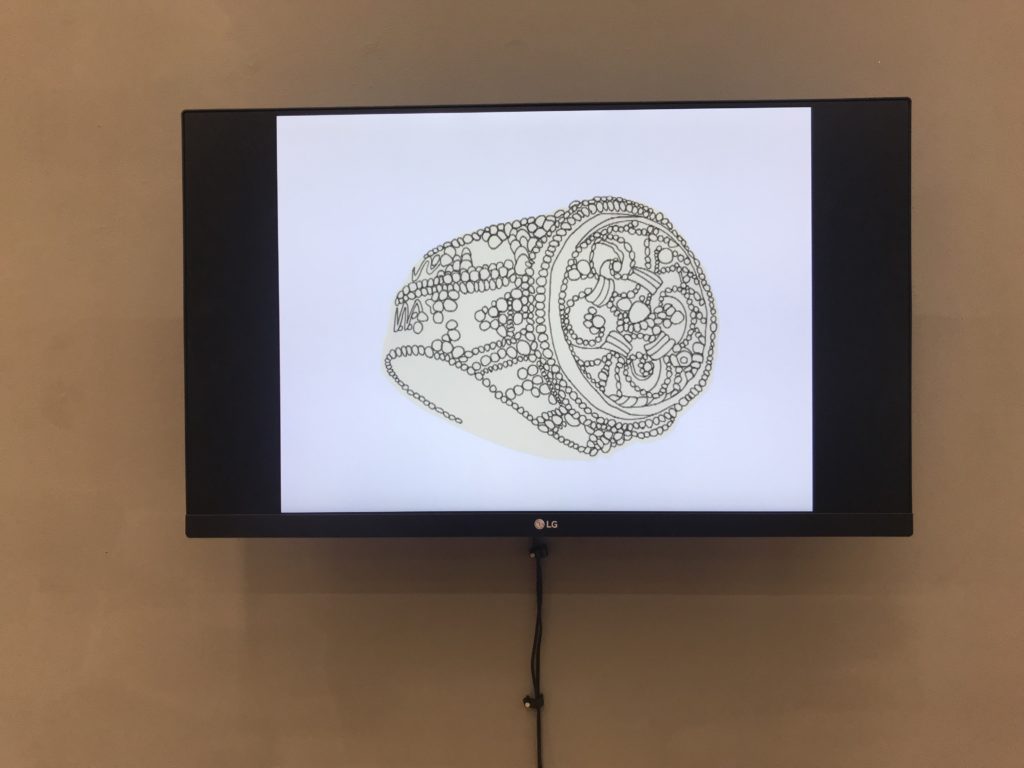
Overlie (a response to The West Yorkshire Hoard) Film piece – June 2019
Treatment: Disarray
Outline, Material, Detail – Overlie, questions the different parts of the 6 gold and 1 lead object/s that make up this hoard; by viewing these parts separately, can the perceived value of these objects change? Does the viewer have a preference
This film is made from drawings based on the photographs taken by Leeds Council – © Leeds Museums and Galleries –https://creativecommons.org/licenses/by-nc-sa/3.0/ https://www.mylearning.org/stories/the-west-yorkshire-hoard-medieval-treasure/resources
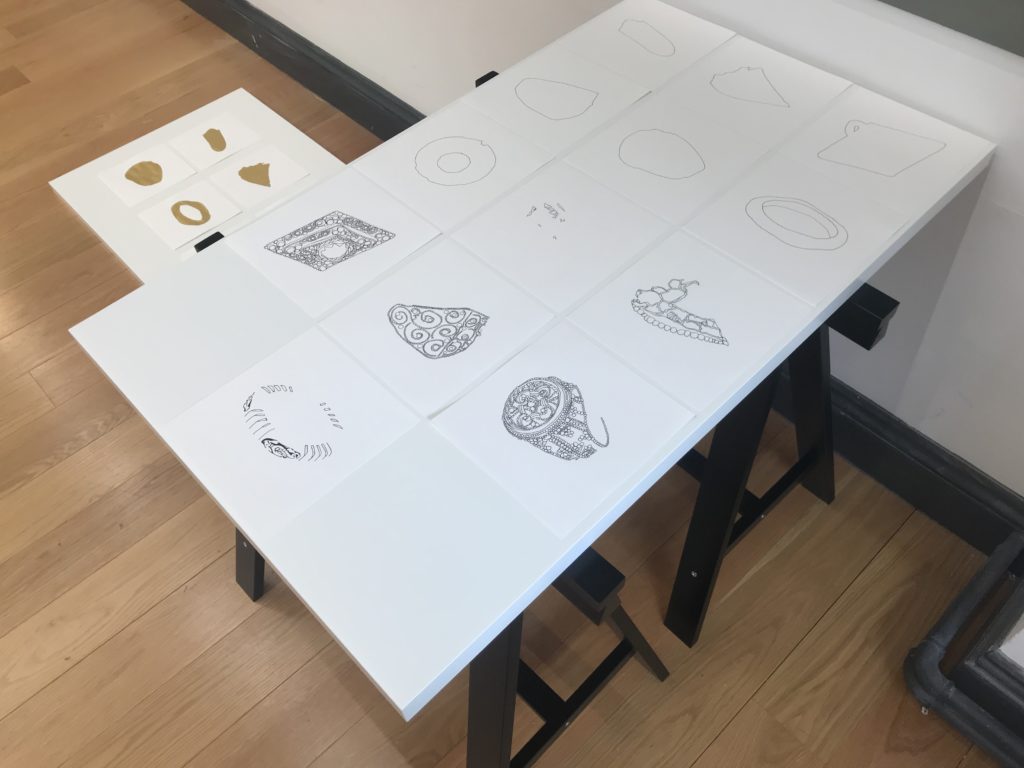
Overlie – the drawings (a response to The West Yorkshire Hoard)
Material: Paper, ink – black and gold, pencil – May 2019
Size: 19cm(w) x 19.5cm(l)
Treatment: Arrayed
Each drawing was produced to show a visual breakdown of the visual components that make up the 6 gold and 1 lead object in this hoard. The outline and detail drawings are made using black Indian ink. The material gold drawings are made using gold ink, each with 6 layers of ink; to denote their fellow hoard gold objects. The material lead drawing is made with
These drawings are based on the photographs taken by Leeds Council – © Leeds Museums and Galleries – https://creativecommons.org/licenses/by-nc-sa/3.0/
https://www.mylearning.org/stories/the-west-yorkshire-hoard-medieval-treasure/resources
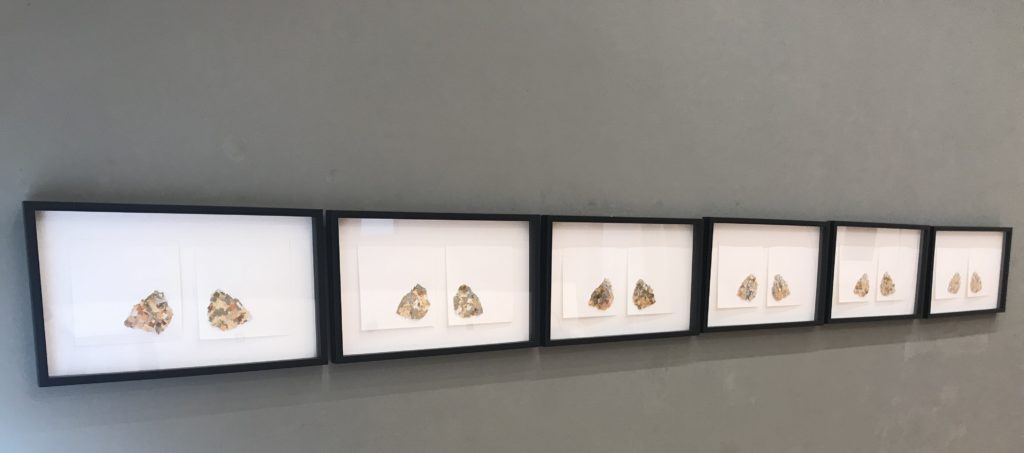
Golder than gold (a response to The West Yorkshire Hoard)
No. 1- = 86% gold, 8% silver, 6% copper No. 1+ = 90% gold, 6% silver, 3% copper Primary material: Gold Completeness: Complete
No. 2- = 77% gold, 17% silver, and 6% copper No. 2+ = 81% gold, 15% silver, 4% copper Primary material: Gold Completeness: Complete
No. 3- = 85% gold, 11% silver, 4% copper No. 3+ = 89% gold, 9% silver, 2% copper Primary material: Gold Completeness: Complete
No. 4- = 75% gold, 22% silver, 4% copper No. 4+ = 79% gold, 19% silver, 2% copper Primary material: Gold Completeness: Complete
No. 5- = 88% gold, 6% silver, 6% copper No. 5+= 92% gold, 4% silver, 3% copper Primary material: Gold Completeness: Complete
No. 6- = 89% gold, 7% silver, 4% copper No. 6+= 91% gold, 5% silver, 4% copper Primary material: Gold Completeness: Complete
All material percentage and breakdown information taken from the Portables Antiques Scheme’s scientific analysis of The West Yorkshire Hoard – https://finds.org.uk/database/artefacts/record/id/391699 & https://finds.org.uk/database/artefacts/record/id/459594
Golder than
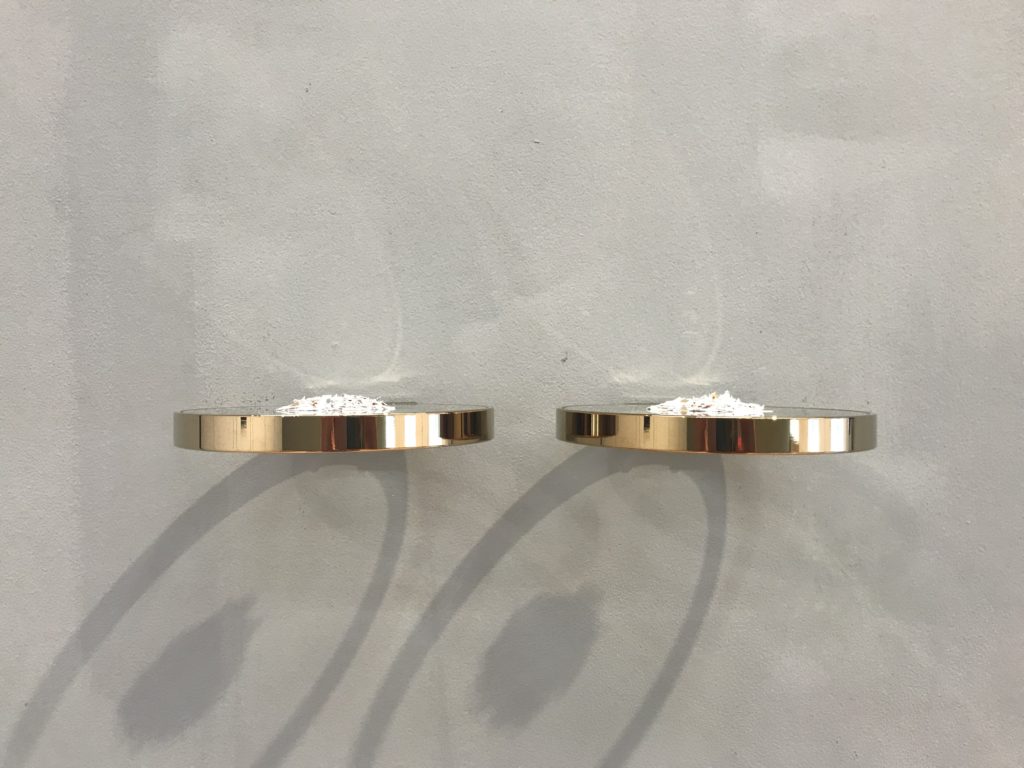
Nicks – a physicality (The West Yorkshire hoard) Object – 1 set Material: Card – gold, silver, copper
The physical remnants of the Golder than gold, each set are the nicked card cuts. The set on the left is No. 1-6 – and the set on the right is No. 1-6 + Through the physical act of cutting, these smaller card cuts have given the card pieces their worth, their place in the work Golder than gold. Hence the place of the cut in this value cycle can be considered. If made from the real material they represent, they would be kept, reused, recast into something else. As it is with their card genetic makeup, they can just be.
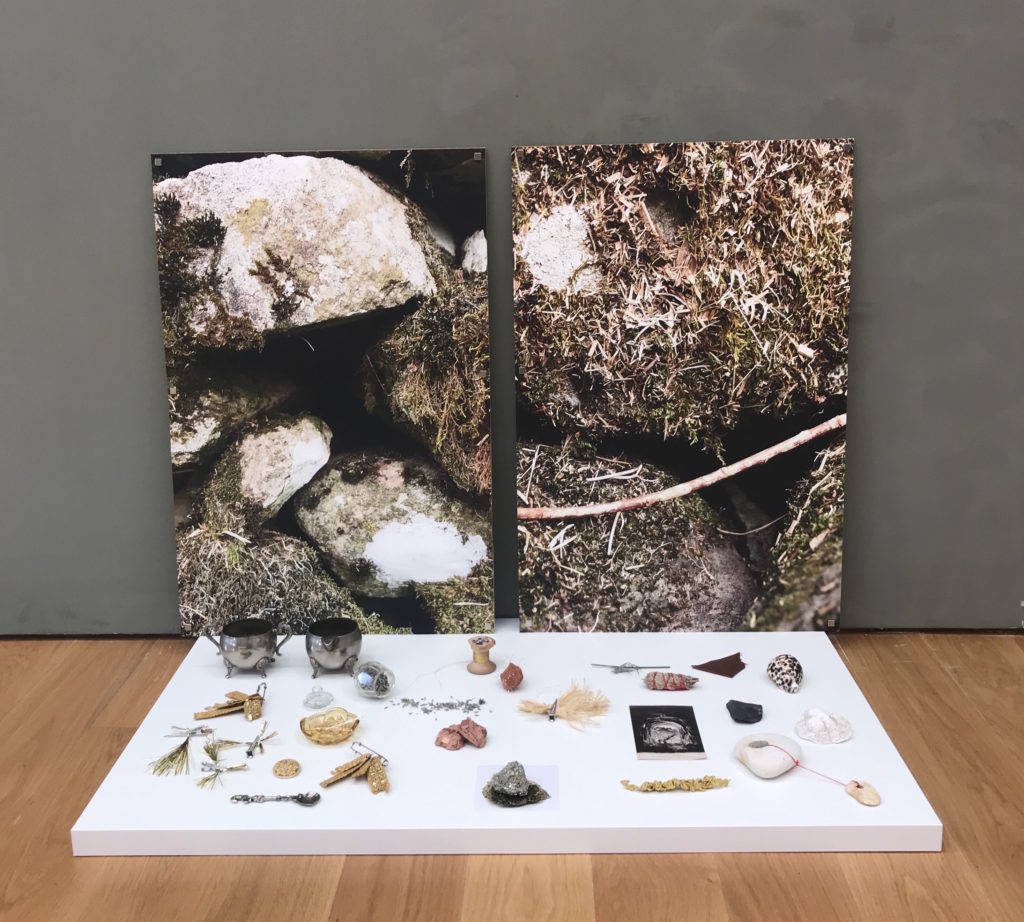
A hoard you say (dual) 2 Photographs – 3 sets of small objects (approx. 90cm)
A hoard you say (dual) looks to visualise what we might perceive a hoard to look like; what is should or could contain and where it might be found. All the sets of objects are mixed materials of mixed value but are laid according to their face

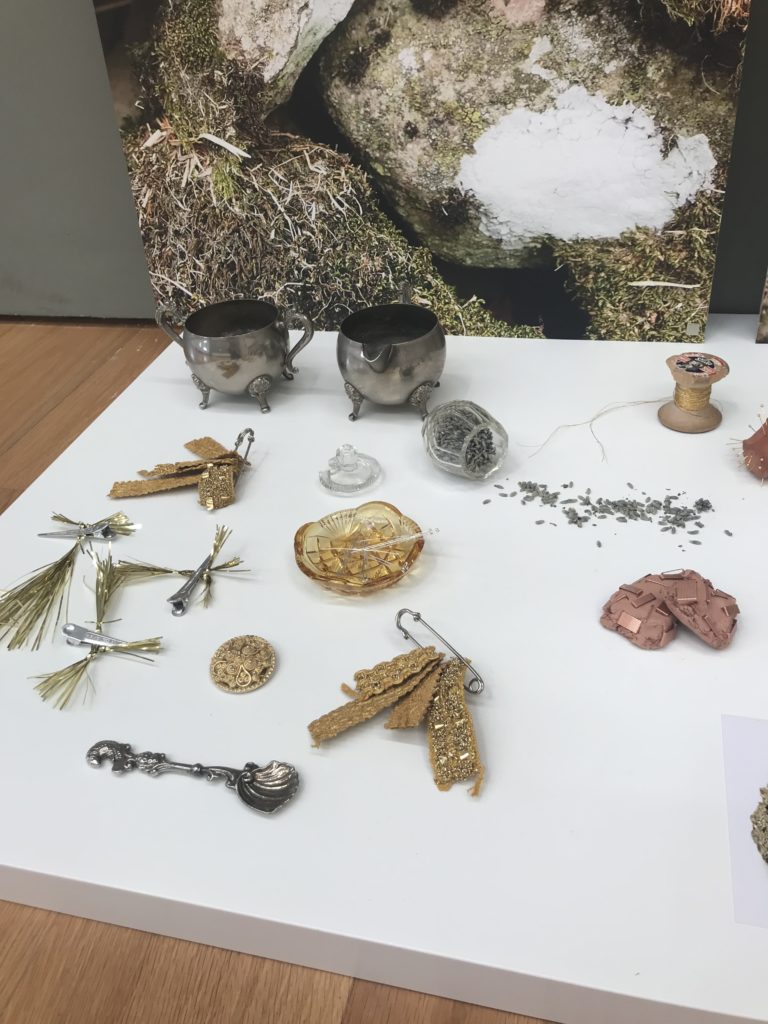
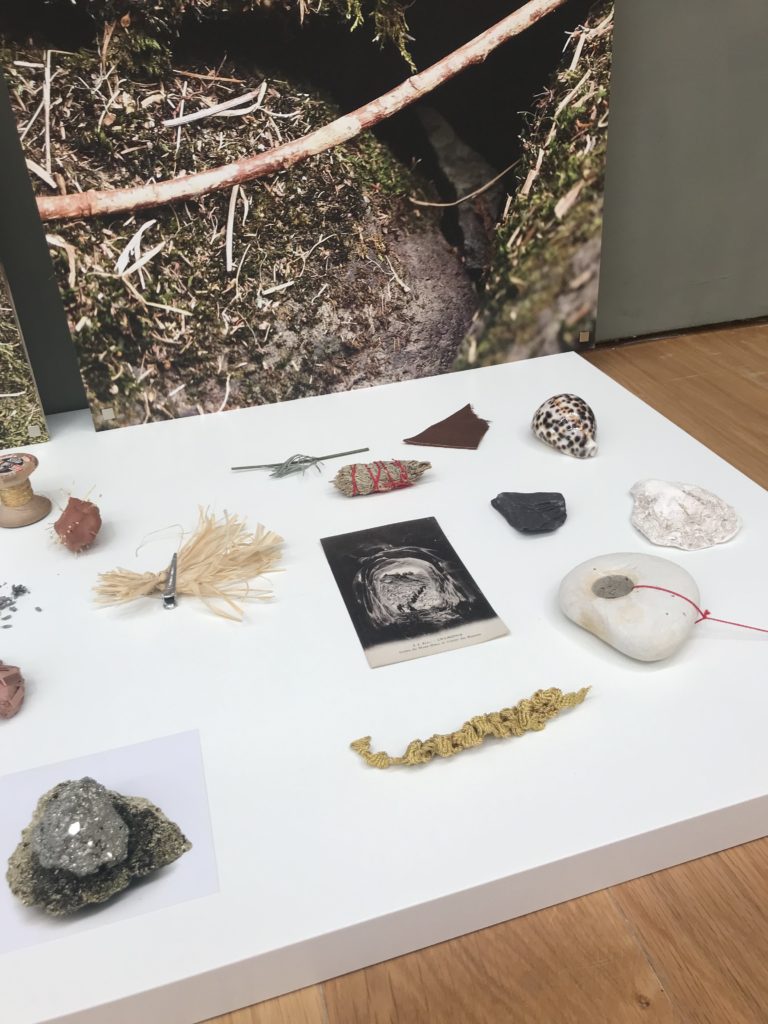
Comments are closed.